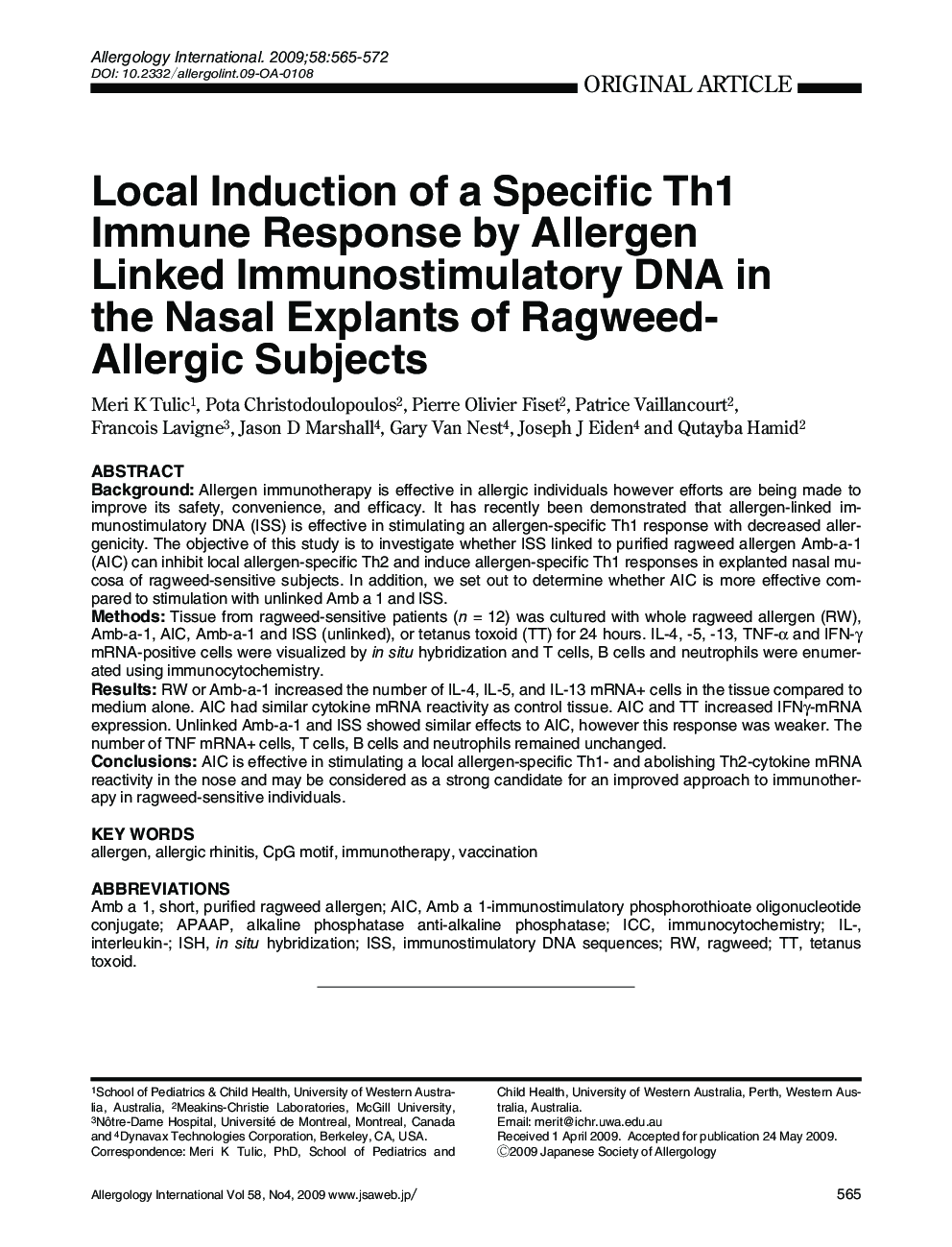| Article ID | Journal | Published Year | Pages | File Type |
|---|---|---|---|---|
| 3341010 | Allergology International | 2009 | 8 Pages |
ABSTRACTBackgroundAllergen immunotherapy is effective in allergic individuals however efforts are being made to improve its safety, convenience, and efficacy. It has recently been demonstrated that allergen-linked immunostimulatory DNA (ISS) is effective in stimulating an allergen-specific Th1 response with decreased allergenicity. The objective of this study is to investigate whether ISS linked to purified ragweed allergen Amb-a-1 (AIC) can inhibit local allergen-specific Th2 and induce allergen-specific Th1 responses in explanted nasal mucosa of ragweed-sensitive subjects. In addition, we set out to determine whether AIC is more effective compared to stimulation with unlinked Amb a 1 and ISS.MethodsTissue from ragweed-sensitive patients (n = 12) was cultured with whole ragweed allergen (RW), Amb-a-1, AIC, Amb-a-1 and ISS (unlinked), or tetanus toxoid (TT) for 24 hours. IL-4, − 5, − 13, TNF-α and IFN-γ mRNA-positive cells were visualized by in situ hybridization and T cells, B cells and neutrophils were enumerated using immunocytochemistry.ResultsRW or Amb-a-1 increased the number of IL-4, IL-5, and IL-13 mRNA + cells in the tissue compared to medium alone. AIC had similar cytokine mRNA reactivity as control tissue. AIC and TT increased IFNγ-mRNA expression. Unlinked Amb-a-1 and ISS showed similar effects to AIC, however this response was weaker. The number of TNF mRNA + cells, T cells, B cells and neutrophils remained unchanged.ConclusionsAIC is effective in stimulating a local allergen-specific Th1- and abolishing Th2-cytokine mRNA reactivity in the nose and may be considered as a strong candidate for an improved approach to immunotherapy in ragweed-sensitive individuals.
